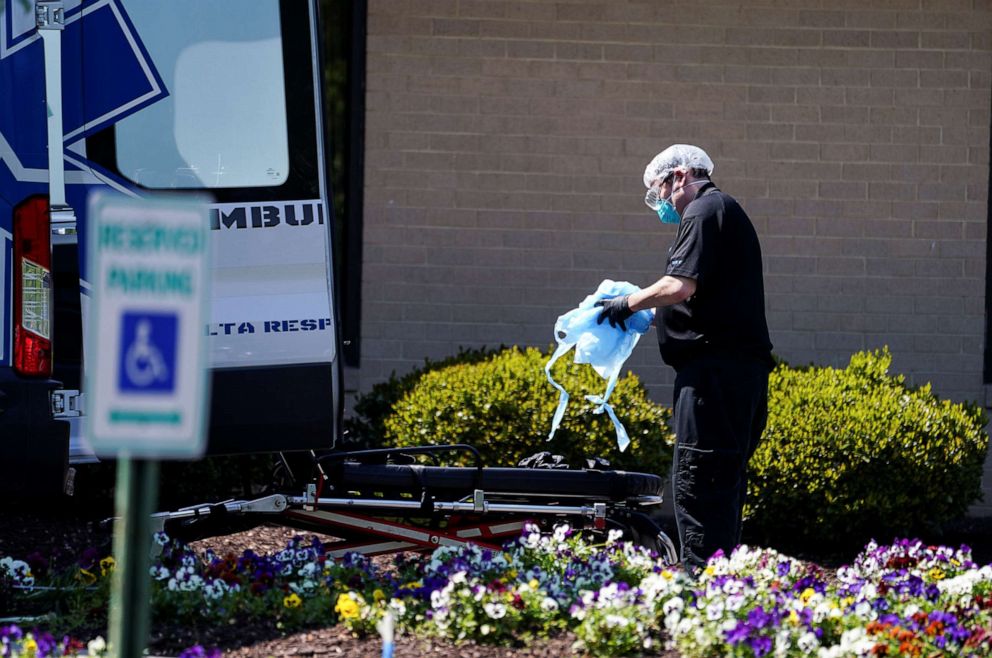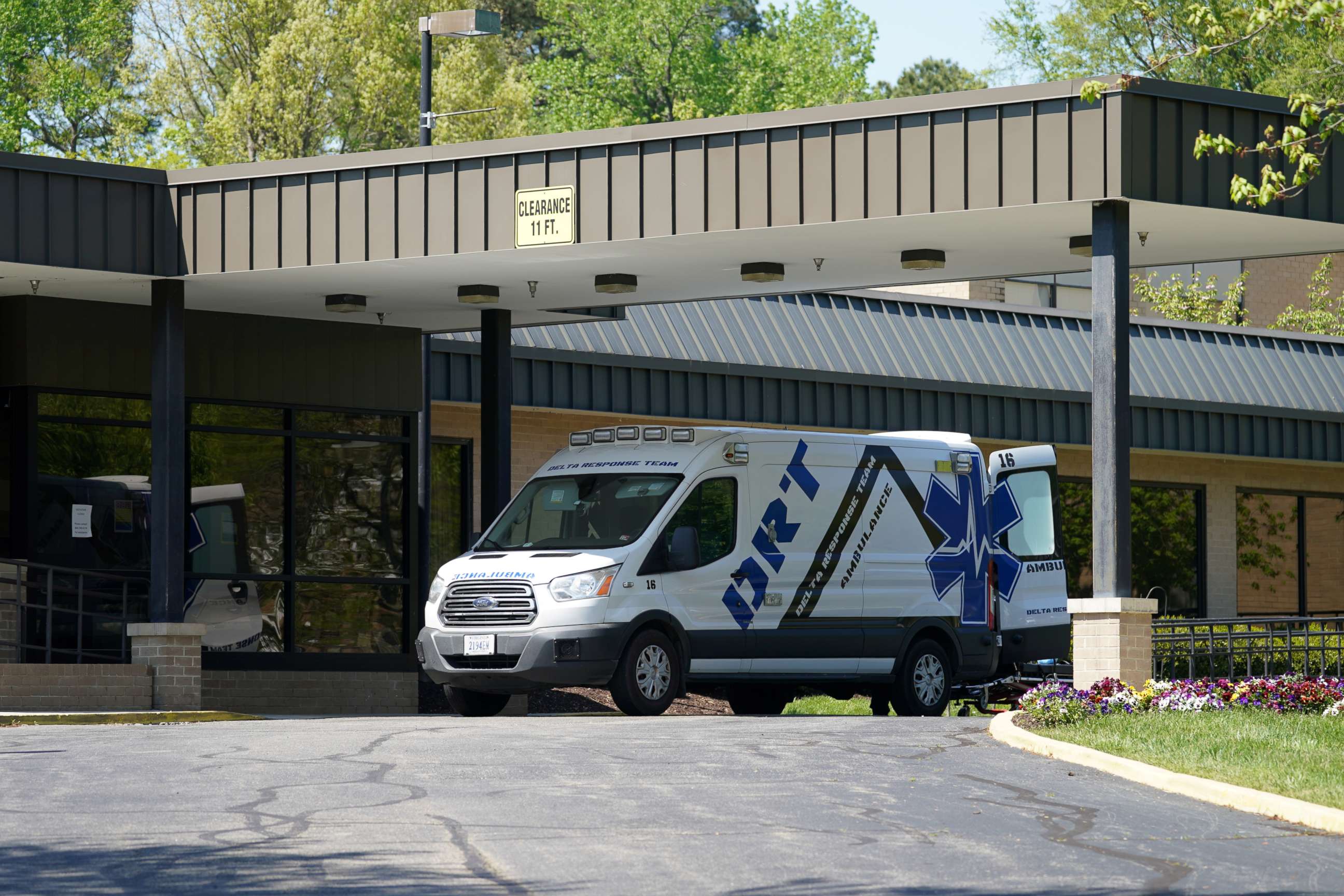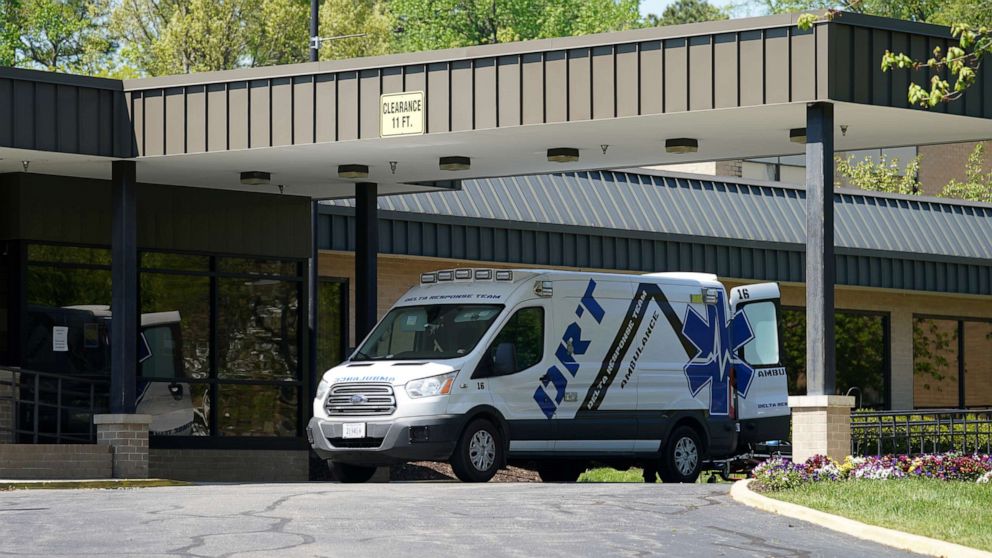As US begins reopening, nursing home residents remain on lockdown
After weeks of being unable to see her uncle in a Richmond, Virginia, nursing home, Precious Turner hatched a plan. With a lockdown on visits to the Canterbury Rehabilitation and Healthcare Center in place since March, she would send pink carnations to every resident inside.
"I just sense that they're feeling really lonely and isolated and that as family members, we can't really talk to them or touch them or get to them," Turner said recently. "And so being able to send this flower is a way to say, 'Hey, I'm thinking about you and you're still in my thoughts and you haven't been forgotten.'"
In the midst of a devastating death toll inside America's nursing homes, Turner's gesture last month represented an early attempt to grapple with one of the unexpected consequences of COVID-19 in nursing homes: the extended isolation of those who have survived. The disease caused by the novel coronavirus has killed more than 26,000 residents in nursing and long-term care facilities.
Most, if not all of the 15,000 nursing facilities around the country have prohibited outside visitors since early March -- federal regulators announced measures directing nursing homes to "significantly restrict visitors and nonessential personnel" on March 13.

That isolation order seems to have no immediate end in sight, even as the rest of the country begins to hatch plans for a reopening, said Mark Parkinson, who leads the American Health Care Association and National Center for Assisted Living (which represent a combined 11,000 facilities nationwide).
"We know it's been really challenging for family members and we completely understand that," Parkinson told ABC News. "But the challenge with this virus is that you can have absolutely no symptoms and be carrying the virus, and for that reason, we have to be really, really careful about letting untested visitors into the buildings."
The decision to cut off nursing home residents from outside visitors was one of the first guidelines imposed by state and federal regulators, and one that was in place well before the coronavirus pandemic began to infect nursing facilities across the U.S.
Medical experts credit the move for preventing broader spread. But even with nursing home residents largely cordoned off, the virus has moved effortlessly through many facilities, most likely carried by staff members who were infected but asymptomatic. In some facilities, scores of vulnerable residents housed in close quarters have fallen ill, and many have died.
Last week, the Wall Street Journal reported that the agency that regulates nursing care in the U.S., the Centers for Medicare & Medicaid Services, has begun to circulate drafts of a proposal that would eventually lay out steps for facilities to gradually reopen. For nursing centers that have seen limited exposure to COVID-19, the ability to go 14 days with no new cases may crack open the door for a limited number of visitors, the WSJ report said. For the homes that have experienced the most infections, the bar would be higher.
Seema Verma, the administrator at the Centers for Medicare & Medicaid Services, told reporters that crafting a plan to lift the restrictions has posed unique challenges.
"We want to make sure that whatever we do, that we are putting the health and safety of the nursing home residents at the top," Verma said in an interview Thursday. "That's the most important priority. So we're starting to have those discussions about how we can make sure that nursing homes are safe and that visitors can come back in a safe way."

Verma said moves toward reopening will ultimately depend on a host of factors for each home, for example: looking at the amount of infection in the surrounding community and seeing what has happened in that specific nursing home. Do they know what the status is of their staff and of the nursing home residents?
Those are the things Verma said everyone is thinking about, and which will factor into how the guidelines are fashioned.
There are strong forces supporting efforts to permit relatives to venture back into these fragile environments. Reestablishing family connections will be "essential for both [the] mental and physical well-being" of long-term care residents, said Richard Mollot, executive director of The Long Term Care Community Coalition, which advocates for residents.
"I think that sooner rather than later we will need to implement protocols for such visits," Mollot said. "First on a limited basis, but more robustly as can be done safely as time goes on."
Advocates for those in long-term care say another important benefit of family visits also cannot be overlooked: the role those visitors play in protecting residents from neglect or abuse. Matt Morgan, a Florida attorney representing families that have filed notices of intent to sue a nursing facility where 16 residents died during the COVID-19 outbreak, said relatives serve as "the eyes and ears" for the elderly.
"If the sons and daughters, the loved ones of the elderly nursing home residents, are not there to see how their loved ones are being taken care of, no one is holding them accountable," Morgan said. "They don't have the ability to enter the facility to make sure that mom and dad are being properly cleaned and being cared for."
But as many communities flirt with broader efforts at reopening, any plan to allow visitors back into senior living facilities could be perilous without more ways to ensure the disease is not entering with them, said Kevin O' Neil, a chief medical officer at North Carolina-based Affinity Living Group, which has 140 communities in six states.
"In light of what's happening right now, we're not going to relax visitor restrictions," O'Neil said.
O'Neil, a geriatrician, said that while he and others supervising care in nursing facilities recognize the harmful toll of social isolation, they need to see wider and more available testing before they can allow visitors the kind of access they once had.
Mark Gloth, chief medical officer of HCR ManorCare, one of the nation's largest nursing care providers, said his facilities are developing "COVID-19 scores" that help staff evaluate the risk of someone becoming infected, and how they may fare if that occurs. A resident with low risk may eventually be more likely to receive visitors sooner than one with high risk.
One exception that is already being made, Gloth said, is for residents who are at the end of their life, or, as he put it, "actively dying." In those cases, exhaustive efforts are made to arrange visits with loved ones, he said.
"That is one of our missions," Gloth said. "That no one dies alone."
As nursing homes contemplate an eventual return, Parkinson said he believes they should be armed with the same regimen currently in place at the White House: rapid testing of anyone who wishes to enter.
"Until we have on-site testing with immediate results, it's not responsible to have visitors come back into the building," he said.
For Michael McHenry, who has not visited his grandfather at a nursing home in Dresher, Pennsylvania, since mid-March, that could mean a painful wait.
"It's been kind of difficult given the circumstances for both our family and for him," McHenry said. "Right now, we are just happy knowing that he is OK. It's hard on all of us, but we understand the situation. "




